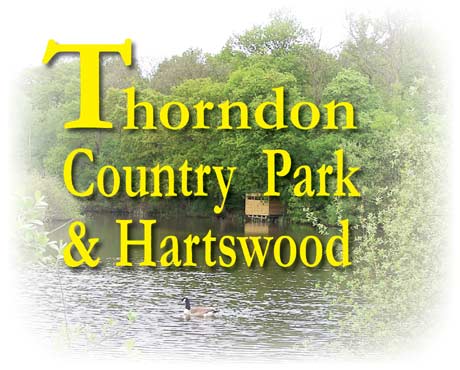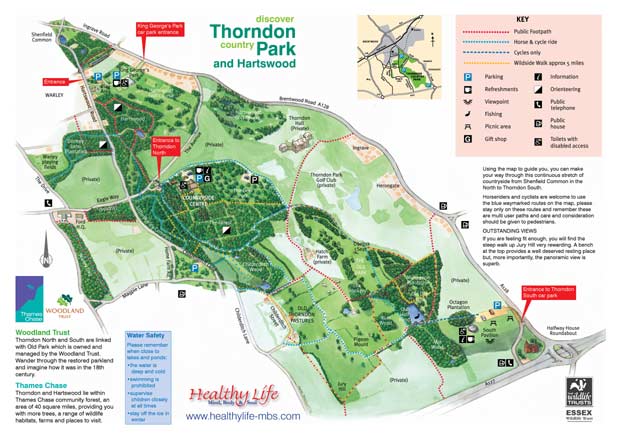Thorndon Country Park and Hartswood - Healthy Life Essex
Home » Articles » Outdoor Life » Countryside in Essex » Country Parks & Nature Reserves » With Visitor Centres » Thorndon Country Park and Hartswood
Thorndon Country Park and Hartswood, linked with the treasures of lesser-known sites, provide a large area of countryside to enjoy. Most of the park is now woodland, a mix of conifer plantation and ancient broadleaved woods. Much of Thorndon North was a deer park until recent times. Many old pollarded oaks and hornbeams still stand on the acid grassland pasture of the old deer park, forming part of a 220-acre Site of Special Scientific Interest. There are also marsh areas, ponds, haymeadows, and areas of ash, willow and sweet chestnut coppice.
In Thorndon Country Park you can experience atmospheric places, charged with a sense of history and filled with the scent of wildflowers and the call of birds. Whether on foot, bicycle or horseback you can enjoy the peace and wildlife of the Brentwood Countryside.
| Open a larger scale copy of this map in Adobe pdf format |
A HISTORIC PARK
The last Lord Petre to occupy the Old Hall, Robert James, the 8th Lord, was a gardening pioneer. He had hot houses growing exotic fruits such as pineapples. In what is now the damp and shady Menagerie Plantation, he housed a miniature zoo which probably contained animals such as terrapins, hummingbirds and squirrels. His ideas and plans had a profound influence on the Thorndon landscape.
New Thorndon Hall, designed by James Paine, was finished in 1770. Over £5,000 was paid to ‘Capability’ Brown to completely re-organise the park and gardens to relate them to the new mansion.
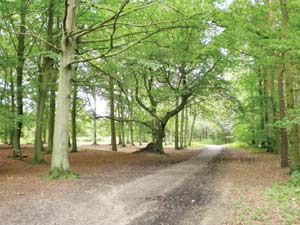 In the early twentieth century the Thorndon estate was broken up and sold off. Fragments of the estate were bought by Essex County Council in 1939, and 385 of these acres form the present country park. In 1992 the Woodland Trust purchased 136 acres of Hatch Farm, once again uniting Thorndon North and South into one large unit of publicly held land.
In the early twentieth century the Thorndon estate was broken up and sold off. Fragments of the estate were bought by Essex County Council in 1939, and 385 of these acres form the present country park. In 1992 the Woodland Trust purchased 136 acres of Hatch Farm, once again uniting Thorndon North and South into one large unit of publicly held land.
The storm of 1987 wreaked havoc. Every road and track in the park was blocked by piles of fallen trees. It has taken years to clear and replant, but gone now are the gloomy blocks of dense conifers, replaced by a new forest of native broadleaves such as oak, hornbeam and wild cherry. There is now a mosaic of open areas and high forest, with abundant ground cover in the sunny clearings. Much of this new planting has been done by local schoolchildren, many of whom come back regularly to visit their trees.
FLORA AND FAUNA
For non-stop action in the winter, visit the conifer and beech trees of the Forest. Watch for the red flash of crossbills in the treetops and the orange splash of bramblings as they feed on seeds and nuts. In the spring, listen out for singing firecrests. If you are lucky, you might see and hear the woodcock.
Thorndon is a good site for amphibians and reptiles. The palmate and smooth newts at the Childerditch Ponds are thriving, although seldom seen. While walking in the sunny open areas you may be lucky enough to catch a glimpse of a basking grass snake or common lizard before it darts into nearby cover.
Mammals are well represented with weasels, foxes, rabbits, grey squirrels and several active badger setts.
There is an abundance of insects, spiders and other ‘creepy crawlies’, including several rare species of beetle which feed and make their homes in the very old dead wood. In Childerditch Field some twenty-six species of butterfly have been recorded, including brown argus, purple and white-letter hairstreaks and ringlet. The field is also a good place to watch the aerial acrobatics of hunting dragonflies, as is Old Hall Pond at Thorndon South.
 Enjoy the wild flowers in spring. Recorded in 1598, Mill Wood has an amazing variety of wildflowers including bluebells, violets, yellow archangel and wood anemone, framed by the glossy green foliage and creamy flowers of the midland hawthorn. In summer, it is the fens of the Childerditch Ponds which provide the best show. Damp-loving plants like great willow herb, wild angelica and sneezewort grow among the aromatic mints and woundworts, bartsia and scullcap. In autumn there is an abundance of fungi of all shapes and colours throughout the park.
Enjoy the wild flowers in spring. Recorded in 1598, Mill Wood has an amazing variety of wildflowers including bluebells, violets, yellow archangel and wood anemone, framed by the glossy green foliage and creamy flowers of the midland hawthorn. In summer, it is the fens of the Childerditch Ponds which provide the best show. Damp-loving plants like great willow herb, wild angelica and sneezewort grow among the aromatic mints and woundworts, bartsia and scullcap. In autumn there is an abundance of fungi of all shapes and colours throughout the park.
 THE PONDS
THE PONDS
Childerditch Pond is very old. It is held back by a clay dam built in the 13th century. The pond is managed for conservation, so no fishing is allowed. It is a haven for waterfowl and you might see coots, mallards or even a heron.
Old Hall Pond is managed for fishing (you will need a day ticket). With many benches alongside, it is a great place to sit and ponder.
Thorndon Countryside Centre
Opened in 1989, this was built from timber blown over in the 1987 storms. It is a joint venture 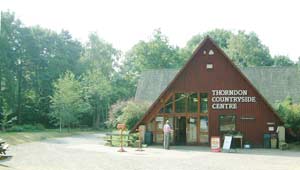 between Essex County Council and the Essex Wildlife Trust. The shop has a diverse range of gifts. Hot and cold drinks, ice-cream and a range of snacks are available. The Activity Laboratory, used by schools and groups on their visits, is well stocked with field studies equipment. There is also a collection of innovative displays, many of them interactive. Toilet facilities are available, and parking is close to the centre. (see Healthy life events pages)
between Essex County Council and the Essex Wildlife Trust. The shop has a diverse range of gifts. Hot and cold drinks, ice-cream and a range of snacks are available. The Activity Laboratory, used by schools and groups on their visits, is well stocked with field studies equipment. There is also a collection of innovative displays, many of them interactive. Toilet facilities are available, and parking is close to the centre. (see Healthy life events pages)
For visitors with walking difficulties, a four wheel battery-powered scooter is available through the Parkmobility scheme by registering and pre-booking. (contact the Countryside Centre -Telephone: 01277 232944)
THE SOUTH PAVILION
This striking building takes its name from the original outline of the adjoining wood. Opened in 1992 by the 18th Lord Petre of Ingatestone, it holds displays of original art which reflect the landscape, history and wildlife of Thorndon. A refreshment point and toilet facilities are also in the building, and there is also a designated barbeque area.
The Essex Ranger Service
Based at the Countryside Centre, the Essex Ranger Service offers a range of services to the visiting public. Throughout the year the country park staff organise educational and fun activities for schools and other groups. (see Healthy life events pages)
Volunteers are always welcome to help tackle a wide range of jobs with high nature conservation value, such as tree planting and pond work. Volunteers range in age from seven to seventy – so just turn up and join in!
Location, opening Times and contact details:
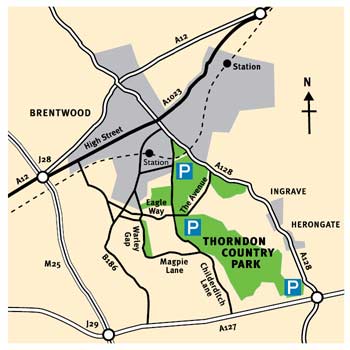 How to find us
How to find us
BY ROAD: See map.
BY BUS: No. 151 – Brentwood Town Centre to Halfway House; No. 73 – Brentwood town Centre to East Warley.
BY RAIL: Brentwood Station is about 2 miles from the Countryside Centre.
For bus and train timetables phone travel line on 08706 082608
Opening Times
Park: 8am until dusk (check entrance boards to find daily closing time).
Pay and display at all times
Countryside Centre open daily:
Summer: 10am to 5pm.
Winter: 10am to dusk.
See also the Healthy Life Essex Country Walk ‘Thorndon Park‘
![]() For further information contact:
For further information contact:
Rangers – telephone: 01277 211250
e-mail: thorndon.country.park@essexcc.gov.uk or visit: www.essexcc.gov.uk/countryparks
 The Countryside Centre -Telephone: 01277 232944
The Countryside Centre -Telephone: 01277 232944
or visit: www.essexwt.org.uk

